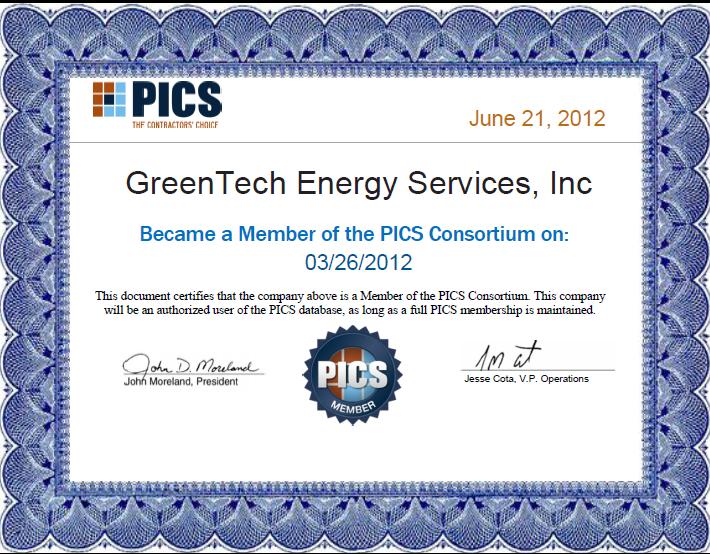Industry and Company News
Lighting retrofit as an investment: more upside than down
Posted September 12th, 2012 by GreenTech Energy Services
It’s easy enough to prove that a lighting retrofit will lower a building’s energy consumption and improve the quality and quantity of light, but there’s another major benefit, perhaps less visible but just as valuable. A lighting upgrade is also a good financial investment, especially during an economic downturn. In some cases, it can cut utility bills by 30-50%. The new, longer-life equipment will also reduce maintenance costs, and the project can be financed and paid for out of future energy and operational savings.
In other words, you can avoid any upfront costs, replace obsolescent lighting with new equipment, and reap annual energy savings that will last far beyond the payback period – and that payback period may only be a few years. Think about that: in less than three years, this project could be making money for you. It’s hard to find a downside. In fact, the only real risk is that of waiting: by delaying a lighting retrofit, your business could be wasting tens of thousands of dollars a year in utility costs. So if you have put off replacing those old T12 fluorescents, metal halides or mercury vapor lights because it’s not in your budget this year, think again!
Below is an example of what we mean. Under this arrangement, a building could be retrofit with state-of-the-art energy efficient components with no up-front money. The monthly payments are always less than the energy savings realized, allowing the customer to save money each year of payment, receive all the tax benefits, and have an estimated positive cash flow over ten years of $629,000. Bottom line: this project will improve the company’s cash flow, putting money into its coffers that can be used to build the business. And that’s a proposition few businesses can afford to turn down.
Changes ahead for NJ’s Clean Energy Program
Posted August 31st, 2012 by GreenTech Energy Services
- The state legislature has appropriated an amount not to exceed $131,500,000 from the Clean Energy Fund for transfer to the General Fund as state revenue for FY 2013. This will require the Board of Public Utilities to revise its budget and program descriptions.
- The Office of Clean Energy has developed a straw proposal to address the funding level for 2013 through 2016, and is accepting comments until mid-September. This proposal initially addresses the potential transition from a majority of rebate incentive programs to a balance of rebates and financing programs such as revolving loans.
- In addition, there is currently a Request for Proposal for a new program administrator that would combine the two Market Manager contracts with Honeywell and TRC and the Program Coordinator contract with Applied Energy Group into one contract (in other words, one administrator for all commercial/industrial, residential and renewable energy programs).
- According to a summary of the proposal on the Clean Energy website, there would be a re-evaluation and reduction of the suite of measures currently incentivized under the commercial and industrial retrofit program.
- Bottom line: if this proposal is enacted into law, commercial and industrial facilities with obsolete lighting may soon be unable to defray the costs of upgrading those lights with the help of utility rebates.
Cocktails for a Cause
Posted August 7th, 2012 by GreenTech Energy Services
 GreenTech staff recently attended Cocktails for a Cause, a fundraiser to benefit The Food Bank of New Jersey, hosted by the New Jersey Apartments Association. GreenTech has helped numerous members of the NJAA cut utility costs and reduce energy consumption by retrofitting lights in their properties throughout the Mid-Atlantic region.
GreenTech staff recently attended Cocktails for a Cause, a fundraiser to benefit The Food Bank of New Jersey, hosted by the New Jersey Apartments Association. GreenTech has helped numerous members of the NJAA cut utility costs and reduce energy consumption by retrofitting lights in their properties throughout the Mid-Atlantic region.
T-12 Lighting Replacement Initiative for K-12 Schools
Posted July 30th, 2012 by GreenTech Energy Services
 In early July, the New Jersey Clean Energy Program launched a School Lighting Initiative providing incentives to the state’s private and public K-12 schools for replacing T-12 fluorescent lights with new T-8 energy-efficient lighting. The incentives covered up to the entire cost of the upgrades, including materials, labor, permitting and disposal of the T-12 fixtures. A total of $6 million was allocated for this initiative, available to participants on a first-come, first-served basis. All public and private K-12 schools were eligible for money, as long as their utility bill included a nearly universal surcharge for clean energy called the Societal Benefits Charge. Some schools served by municipal utilities or regional cooperatives would not qualify.
In early July, the New Jersey Clean Energy Program launched a School Lighting Initiative providing incentives to the state’s private and public K-12 schools for replacing T-12 fluorescent lights with new T-8 energy-efficient lighting. The incentives covered up to the entire cost of the upgrades, including materials, labor, permitting and disposal of the T-12 fixtures. A total of $6 million was allocated for this initiative, available to participants on a first-come, first-served basis. All public and private K-12 schools were eligible for money, as long as their utility bill included a nearly universal surcharge for clean energy called the Societal Benefits Charge. Some schools served by municipal utilities or regional cooperatives would not qualify.
In mid-July, the Program posted the application form that had to be filled out on behalf of each school that wished to participate. By the end of the day on July 18, applications had already exceeded the $6 million in available funds. The Program immediately stopped accepting additional applications, but intends to discuss the release of additional funding when program managers meet with the Board of Public Utilities in September. It is obvious from the speed with which the first round of funding was snapped up that there are still many of those fat, energy-hungry T12 bulbs hanging from the ceilings of schools throughout the state.
What does it mean to really go green?
Posted July 3rd, 2012 by GreenTech Energy Services
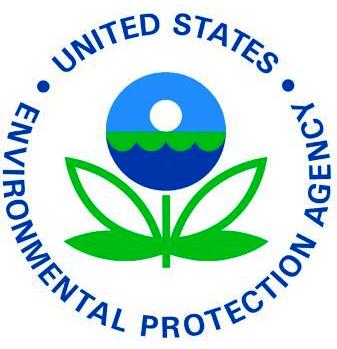 If you’ve ever wondered what it really means to “shrink your carbon footprint,” you’ll find the answer on the Environmental Protection Agency’s website. A Greenhouse Gas Equivalencies Calculator has been posted on the site that translates measures of carbon dioxide and other emissions into concrete, everyday terms.
If you’ve ever wondered what it really means to “shrink your carbon footprint,” you’ll find the answer on the Environmental Protection Agency’s website. A Greenhouse Gas Equivalencies Calculator has been posted on the site that translates measures of carbon dioxide and other emissions into concrete, everyday terms.
Say, for example, that you implement a lighting retrofit project that reduces your carbon dioxide emissions by 500,000 pounds. If you plug that into the EPA calculator, you will be told that this is equivalent to:
• The CO2 emissions from 44.5 passenger vehicles
• The CO2 emissions from 25,426 gallons of gasoline consumed
• The CO2 emissions from 527 barrels of oil consumed
• The CO2 emissions from 3 tanker trucks’ worth of gasoline
• The electricity use of 28.3 homes for one year
• Carbon sequestered (removed from the atmosphere) by 5,815 tree seedlings grown for ten years
• Carbon sequestered annually by 48.4 acres of pine or fir forests
• Carbon sequestered annually by 2.2 acres of forest preserved from deforestation
• The CO2 emissions from 9,450 propane cylinders used for home barbecue
• The CO2 emissions from burning 1.2 rail cars worth of coal
• Greenhouse gas emissions avoided by recycling 79 tons of waste instead of sending it to the landfill
This, along with a reduction in utility bills, better light levels, and compliance with Federal energy mandates, makes a powerful argument for switching to energy efficient lighting.
Greener Greater Buildings
Posted June 26th, 2012 by GreenTech Energy Services
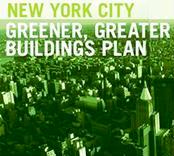 Lighting retrofits in commercial multi-tenant buildings not only slash energy consumption and cost, but also improve occupant comfort and enhance the value of the buildings. However, in sub-metered buildings (where tenants pay for their own utilities), the building owner’s interest in energy efficient lighting is generally restricted to common areas such as lobbies, stairways, entrances, and exterior lighting. There is less incentive for them to implement projects in individual units, since they would be paying for the improvements while the tenants reaped the energy savings.
Lighting retrofits in commercial multi-tenant buildings not only slash energy consumption and cost, but also improve occupant comfort and enhance the value of the buildings. However, in sub-metered buildings (where tenants pay for their own utilities), the building owner’s interest in energy efficient lighting is generally restricted to common areas such as lobbies, stairways, entrances, and exterior lighting. There is less incentive for them to implement projects in individual units, since they would be paying for the improvements while the tenants reaped the energy savings.
An energy-aligned lease can help overcome this barrier by allowing owners to recover predicted energy savings from tenants through a rent hike. To protect tenants against under-performance, the lease could limit the owner’s capital expense pass-through to 80% of predicted savings in any given year (since industry experience shows that actual savings are generally within 20% of predicted savings). In turn, tenants agree to share sub-meter data with building owners.
The Natural Resources Defense Council (NRDC), an environmental action group, has created a model “energy efficiency lease” that incorporates these principals. However, before it can be widely implemented, an educational effort is needed to show tenants and owners how their economic interests are aligned.
For commercial tenants, the following benefits can be highlighted:
- Lower energy costs – a hedge against rising utility bills
- Improved aesthetics and comfort, resulting in increased worker satisfaction & productivity
- Better employee attraction and retention
- Good pr – customers and employees expect a company to be “green.”
- Government and utility incentives, rebates and tax breaks
For building owners, a major benefit to a whole-building energy efficiency project is to enhance its resale value. Buildings that are Energy Star certified have been shown to have higher occupancy rates, increased rent, and lower capitalization rates.
In New York City, there is additional impetus for building owners to implement energy efficiency – a package of laws called the “Greener, Greater Buildings Plan,” which requires building owners to disclose their annual energy use to the city. Starting this fall, the city will give each building an overall energy efficiency score, which will be posted on a public website. Other requirements outlined in the plan:
- Energy efficiency upgrades must be part of all renovations and repairs.
- Detailed energy audits every ten years to prove energy efficiency
- Sub-meters must be used to measure the use of electricity by large tenants and energy-efficient lighting upgrades by 2025.
The hope is that this project will serve as a model for others to follow across the country. As NRDC researchers point out, buildings account for roughly 70 percent of US electricity consumption, and in urban areas like New York, they are responsible for up to 80% of greenhouse gas emissions. A program to reverse this trend is long overdue.
Posted June 21st, 2012 by GreenTech Energy Services
GreenTech is proud to announce that we are now registered with PICS, an international contractor prequalification company that matches clients with contractors who have undergone a rigorous screening process for quality control and safety.
Posted June 19th, 2012 by GreenTech Energy Services
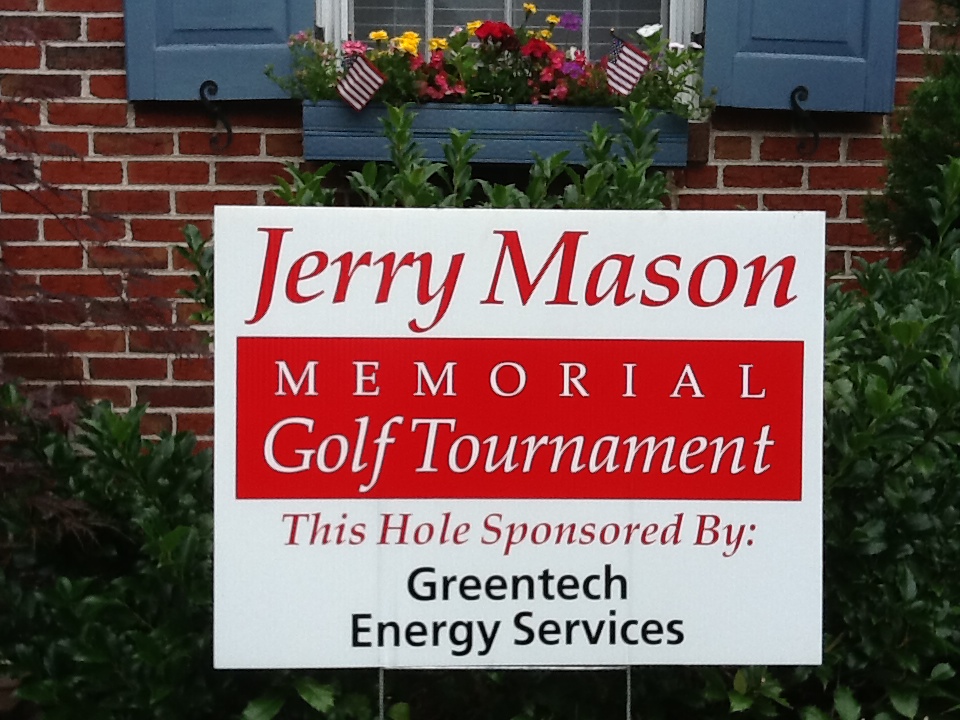 GreenTech’s star auditor (and golfer) Chris Maxwell runs an annual memorial golf tournament whose proceeds go toward an educational fund he set up for the daughters of local resident Jerry Mason, who died in a car accident five years ago. Greentech has sponsored a hole every year and has donated a total of $2,000 over the past 5 years. This year’ tournament, held in mid-June, raised $5,000 for the fund.
GreenTech’s star auditor (and golfer) Chris Maxwell runs an annual memorial golf tournament whose proceeds go toward an educational fund he set up for the daughters of local resident Jerry Mason, who died in a car accident five years ago. Greentech has sponsored a hole every year and has donated a total of $2,000 over the past 5 years. This year’ tournament, held in mid-June, raised $5,000 for the fund.
T12 ON THE WAY OUT!
Posted June 6th, 2012 by GreenTech Energy Services
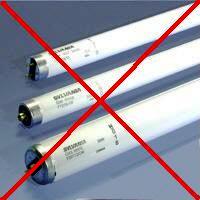 If you’re considering a lighting upgrade, the time to move is now. There are tax benefits and significant incentives available from the utility company that will further decrease the cost of the project, but those funds are limited and are running out fast. If you have any T12 fluorescent lighting, there are even greater incentives to move quickly – on July 14, the manufacture and import of these lamps will be outlawed by Federal energy legislation. That means that any remaining stock being sold by your distributors will skyrocket in price. In fact, some distributors report that prices have already doubled.
If you’re considering a lighting upgrade, the time to move is now. There are tax benefits and significant incentives available from the utility company that will further decrease the cost of the project, but those funds are limited and are running out fast. If you have any T12 fluorescent lighting, there are even greater incentives to move quickly – on July 14, the manufacture and import of these lamps will be outlawed by Federal energy legislation. That means that any remaining stock being sold by your distributors will skyrocket in price. In fact, some distributors report that prices have already doubled.REPLACE OR RETROFIT?
Posted June 6th, 2012 by GreenTech Energy Services
GreenTech Energy Services
email@greentechenergy.com
Phone: 856-439-9400
122 East Kings Highway, Ste 503
Maple Shade, NJ 08052



